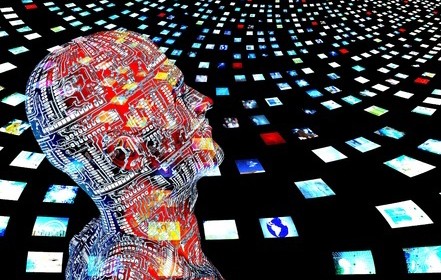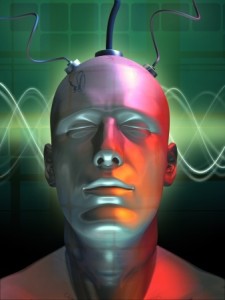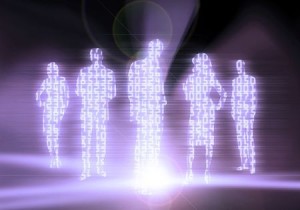
The Internet of Everything; It’s amazing, exciting, and a little scary.
We know it’s coming, and we know it’s going to change our lives.
We hear about a new Ford car that can park itself. We see an ad for a sensor you can embed under your skin that monitors your blood sugar and sends the results out wirelessly to a handheld device.
But as useful as these initial offerings are, they’re only the beginning. There’s much more coming, and the impact of the oncoming wave of connectedness will be huge.
The Internet of Everything (IOE) is defined by Cisco as “bringing together people, process, data, and things to make networked connections more relevant and valuable.”
But . . . is it Big Brother? Or is it the advent of truly empowered human beings?
Follow us on a quick journey through the interesting possibilities.
 A Scenario
A Scenario
You’re in the car, on the way to a meeting. Your smart phone senses that you will be late (based on your calendar, destination, travel speed, and existing traffic conditions). It automatically sends a message to your friends notifying them, and lets you know that it has done so.
Your smart phone also senses your frustration; it detects your rising blood pressure via a small sensor on your arm. In response, it changes the music to a calming classical selection, and adds a soothing lavender scent (your favorite) to the in-car air delivery system.
That’s just one example of the many new scenarios the Internet of Everything will create.
Existing IOE Apps and Devices
Thanks to efforts by companies such as Qualcomm, Texas Instruments, and Intel, we now have inexpensive chips that can connect almost anything to the Internet via Wi-Fi, or to a smart phone via a new standard called Bluetooth Low Energy.
You can add connectivity to an object for less than $5.
The health industry has created lots of devices that monitor all kinds of things relevant to the physical well-being of you and your family, including:
- Jawbone Up: Helps you track your sleeping, movement, and eating patterns.
- Misfit Shine: A wireless activity tracker the size of a button that tracks physical activities, including steps, swimming, and cycling.
- A personal ECG system that monitors your heart rhythm and analyzes it for arrhythmias.
- Owlet, an infant vital signs tracker that monitors your baby’s heart rate, oxygen levels, and skin temperature – and provides rollover alerts during sleep.
There’s also a strong movement to have our homes join the Internet of Everything. We have:
- Connected TVs that deliver content from other computers or from the Internet.
- Home automation systems that provide remote and automatic control of a wide array of devices in your home – and alert you when your plumbing springs a leak!
- Presence sensors that you can place in your children’s backpacks to let you know when they’ve arrived home.
The Future IOE
The Future Looks Like This:
The possibilities are almost endless. It’s as if our own eyes, ears, nose, etc. can go everywhere to check things out – even down to the microscopic level.
- Farmers know when to move the cows to the next pasture based on soil and plant data.
- Retailers know when to staff more people at the registers based on parking lot activity and the number of times the doors to the store are opening.
- Individuals know when to change their diet because their arteries are getting clogged.
- There are no more traffic accidents. Cars drive themselves and avoid collisions.
 The Fun and the Risk
The Fun and the Risk
Can the Internet of Everything make your life easier, healthier, and more informed? Yes.
Can you have fun with it? Yes.
Can you protect your own data? That remains to be seen.
The riskiest issues are about the data itself.
- Who owns the data?
- How do we keep it secure?
How we answer these questions will determine in large part how the Internet of Everything affects humanity.
An Alternative to the End of Privacy
Many people think the Internet of Everything means and end to privacy. But it may turn out differently. The best illustration of forward thinking in this arena is the concept of Life Management Platforms. Martin Kuppinger, who coined the term, says:
“Life Management Platforms will change the way individuals deal with sensitive information like their health data, insurance data, and many other types of information – information that today frequently is paper-based or, when it comes to personal opinions, only in the mind of the individuals. They will enable new approaches for privacy- and security-aware sharing of that information, without the risk of losing control of that information. “
Because of their potential for resolving privacy and security issues for the Internet of Everything, Life Management Platforms may become a part of every person’s connected life.
Conquering the Practical Limitations
There are many other practical hurdles that must be cleared before IOE can really work well. These include hardware and software compatibility, synchronization, and wireless infrastructure issues. These problems are difficult, but not impossible, to resolve. It’s only a matter of time.
NEXT UP: How the Internet of Everything Effects Business

Comments